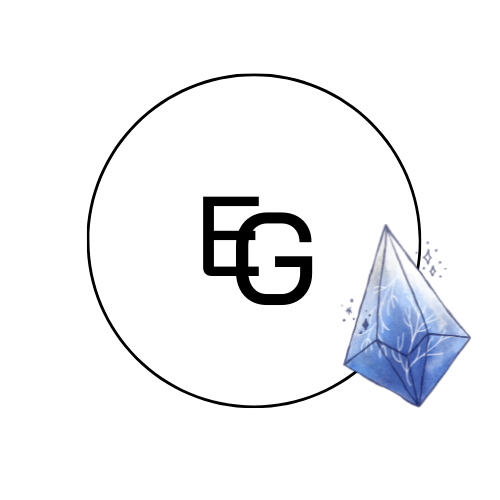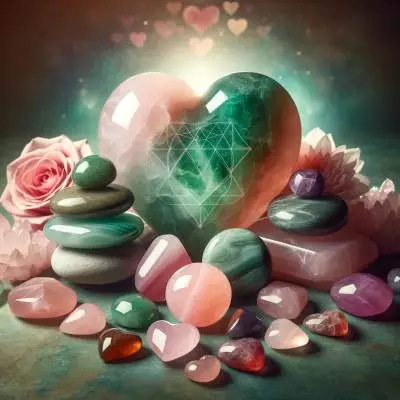Harmony and Healing: A Journey Through the 7 Chakra Stones and Their Profound Meanings
The human body is not just a physical entity but also harbors a complex energy system, often visualized through the concept of chakras. These seven energy centers, each located at specific points along the spine, are believed to govern various physical, emotional, and spiritual aspects of our being. Stones, with their unique vibrational properties, are thought to interact with and influence these chakras, promoting healing and balance within. Understanding the meaning and usage of chakra stones can be a transformative step in personal wellness and spiritual practice.
I. Introduction to Chakra Stones
A. Understanding Chakras
The chakra system is an ancient concept rooted in Eastern spiritual traditions, primarily found in Hinduism and Buddhism. It describes a network of seven primary energy centers located along the spine. Each chakra is not only associated with specific parts of the body but also corresponds to unique emotional and spiritual states. The balanced functioning of these chakras is believed to be essential for physical, mental, and spiritual well-being.
B. Role of Stones in Chakra Healing
Stones and crystals have been used for centuries due to their supposed healing properties. In the context of chakras, each type of stone is believed to resonate with the energy frequency of a specific chakra. Placing these stones on or near the body is thought to help unblock, balance, or enhance the energy flow within the chakras.
C. Overview of the Seven Chakras
The seven chakras, from the base of the spine to the top of the head, are the Root, Sacral, Solar Plexus, Heart, Throat, Third Eye, and Crown chakras. Each of these energy centers governs different aspects of our physical, emotional, and spiritual lives and can be influenced by specific stones.
II. Exploring the 7 Chakra Stones’ Meaning
A. Root Chakra Stone: Stability and Grounding
The Root Chakra, located at the base of the spine, is connected with our sense of stability and survival. Stones like Red Jasper and Black Tourmaline are believed to enhance grounding and security, which are essential for this chakra.
B. Sacral Chakra Stone: Creativity and Emotional Balance
Located just below the navel, the Sacral Chakra is the center of creativity and emotional balance. Stones like Orange Carnelian are thought to stimulate passion, creativity, and emotional health.
C. Solar Plexus Chakra Stone: Personal Power and Confidence
The Solar Plexus Chakra, situated in the upper abdomen, is linked with self-esteem and personal power. Yellow stones like Citrine are used to boost confidence and self-discipline.
D. Heart Chakra Stone: Love and Compassion
The Heart Chakra, located at the center of the chest, is the wellspring of love and compassion. Green or pink stones such as Rose Quartz and Green Aventurine are believed to open, heal, and balance the heart.
E. Throat Chakra Stone: Communication and Expression
Situated at the throat, this chakra governs communication. Blue stones like Lapis Lazuli are thought to aid in expressing truth and improving communication skills.
F. Third Eye Chakra Stone: Intuition and Insight
Located on the forehead between the eyes, the Third Eye Chakra is the center of intuition and foresight. Indigo stones like Amethyst are believed to enhance intuition and spiritual awareness.
G. Crown Chakra Stone: Spiritual Connection and Enlightenment
The Crown Chakra at the top of the head represents our connection to spirituality and enlightenment. Violet or clear stones such as Clear Quartz or Amethyst are thought to enhance spiritual connection and consciousness.
III. How to Use Chakra Stones
A. Selecting the Right Stones
Choosing the right chakra stone involves understanding the specific issues or areas of imbalance one wishes to address. It’s also important to feel a personal connection to the stone, as this can enhance its effectiveness.
B. Methods of Using Chakra Stones
Chakra stones can be used in various ways, such as wearing them as jewelry, placing them on specific body parts during meditation or relaxation, or simply carrying them around.
C. Integrating Stones into Daily Practices
Regularly meditating with chakra stones or placing them in one’s living space can help integrate their energy into daily life. This can contribute to a more balanced and harmonious existence.
IV. Benefits and Limitations of Chakra Stones
A. Physical and Emotional Benefits
Many individuals report feeling more balanced, less stressed, and physically healthier when using chakra stones. These stones are often credited with fostering emotional healing and well-being.
B. Spiritual Benefits
Chakra stones are also seen as tools for spiritual growth, helping individuals deepen their meditation practices and enhance their intuition.
C. Understanding Limitations and Misconceptions
While chakra stones can be powerful tools, it’s important to understand their limitations. They should not replace medical treatment or professional psychological help. It’s also crucial to approach chakra stone healing with realistic expectations and an open mind.
V. FAQs
Q: What do the 7 chakra stones do?
A: The 7 chakra stones are believed to help balance and align the body’s seven main chakras, enhancing physical, emotional, and spiritual well-being. Each stone is thought to emit specific energies that correspond to a particular chakra, promoting healing and equilibrium in that area.
Q: What do the 7 chakras mean?
A: The 7 chakras represent different aspects of human life and consciousness, ranging from basic survival and emotions to communication, intuition, and spiritual connection. Each chakra is associated with specific body parts, emotional states, and life themes.
Q: Where do you put 7 chakra stones?
A: The 7 chakra stones are typically placed on or near the body parts that correspond to each chakra. For example, a root chakra stone might be placed at the base of the spine, while a heart chakra stone would be placed on the chest.
Q: Which crystal for which chakra?
A: Common pairings include Red Jasper or Black Tourmaline for the Root Chakra, Orange Carnelian for the Sacral Chakra, Yellow Citrine for the Solar Plexus Chakra, Green Aventurine or Rose Quartz for the Heart Chakra, Lapis Lazuli for the Throat Chakra, Amethyst for the Third Eye Chakra, and Clear Quartz or Amethyst for the Crown Chakra.
Q: How do you cleanse and charge chakra stones?
A: Chakra stones can be cleansed and charged by methods like running them under water, leaving them in moonlight or sunlight, using smoke from sage or incense, or placing them on or near a larger quartz crystal.
Q: Can chakra stones be worn as jewelry?
A: Yes, wearing chakra stones as jewelry is a popular way to keep their energies close throughout the day. Necklaces, bracelets, and rings with specific stones can help in continuously aligning the chakras.
Q: Are there any risks in using chakra stones?
A: The primary risk is relying solely on chakra stones for health or emotional issues without seeking appropriate medical or psychological help. It’s important to use these stones as complementary tools alongside professional advice.
VI. Conclusion: Integrating Chakra Stones into Holistic Wellness
Incorporating chakra stones into daily life can be a fulfilling and enriching practice, contributing to holistic wellness. By understanding and respecting the traditional meanings and uses of these stones, individuals can embark on a journey of self-discovery and healing. It’s important to approach this practice with openness, mindfulness, and a balanced perspective, integrating it with other aspects of a healthy lifestyle.
VII. Suggested Readings
The suggested readings offer a gateway into the fascinating world of chakra stones and their meanings. Whether you are a beginner or looking to deepen your existing knowledge, these books provide valuable insights and practical guidance.
- “The Book of Stones: Who They Are and What They Teach” by Robert Simmons and Naisha Ahsian – A comprehensive guide to the world of crystals, minerals, and their metaphysical properties.
- “Chakra Healing: A Beginner’s Guide to Self-Healing Techniques that Balance the Chakras” by Margarita Alcantara – An easy-to-follow introduction to chakra healing and balancing techniques.
- “The Crystal Bible” by Judy Hall – A definitive guide to crystals, detailing their shapes, colors, and applications in healing.
- “Wheels of Life: A User’s Guide to the Chakra System” by Anodea Judith – Explores the chakra system in depth, providing practical exercises for health and well-being.
- “Crystals for Beginners: The Guide to Get Started with the Healing Power of Crystals” by Karen Frazier – An ideal book for those new to working with crystals and chakra stones, offering basic knowledge and simple practices.
Embracing the wisdom within these pages can enhance your understanding and appreciation of the harmonious relationship between chakra stones and holistic wellness.



